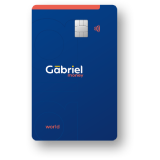
Planning for retirement is an essential part of financial well-being, and retirement accounts play a crucial role in securing a stable future. One of the most common options available in the U.S. is the 401(k) plan. This article provides an overview of 401(k) plans, explains their basics, and offers strategies for maximizing contributions.
What Are Retirement Accounts?
Retirement accounts are specialized savings plans designed to help individuals build financial security for their post-working years. These accounts offer various tax advantages and often come with employer contributions to help raise savings faster.
Common types of retirement accounts include:
- 401(k) plans – Offered by employers, with tax advantages.
- Individual Retirement Accounts (IRAs) – Available to individuals, with different tax benefits.
- Pension Plans – Employer-funded plans that provide guaranteed payouts after retirement.
Overview of 401(k) Plans
A 401(k) plan is an employer-sponsored retirement savings program that allows employees to contribute a portion of their salary before taxes (traditional 401(k)) or after taxes (Roth 401(k)). The key benefits include:
✔ Tax Advantages – Contributions may reduce taxable income (traditional 401(k)) or grow tax-free (Roth 401(k)).
✔ Employer Match – Many employers contribute additional funds, helping increase savings.
✔ Automatic Deductions – Contributions are deducted directly from paychecks, encouraging regular savings.
✔ Investment Growth – Funds are invested in stocks, bonds, or mutual funds to grow over time.
Basics of 401(k) Plans and Employer Matches
One of the most appealing features of 401(k) plans is the employer match. Employers often match a percentage of employee contributions, effectively providing free money to boost savings.
- Example: If your employer matches up to 5% of your salary and you contribute 5%, they will also contribute the same amount.
- Vesting Period: Some employers require employees to work for a certain number of years before they fully own their employer-contributed funds.
- Investment Options: Most 401(k) plans offer various investment choices, including stocks, bonds, and mutual funds.
How to Maximize Your 401(k) Contributions
To make the most of your 401(k), consider the following strategies:
- Contribute as much as possible: Aim to contribute at least enough to receive the full employer match.
- Increase contributions gradually: Raise your percentage yearly or after pay increases.
- Diversify investments: Choose a mix of assets for long-term growth and stability.
- Monitor fees: Be aware of administrative and investment fees that can reduce returns.
- Avoid early withdrawals: Withdrawals before retirement may result in penalties and reduced savings.
Looking Ahead
Understanding 401(k) plans is an essential first step in retirement planning. In the next article, we will dive deeper into the differences between traditional and Roth IRAs, helping you determine which option aligns with your financial goals. We got you! Stay tuned!







